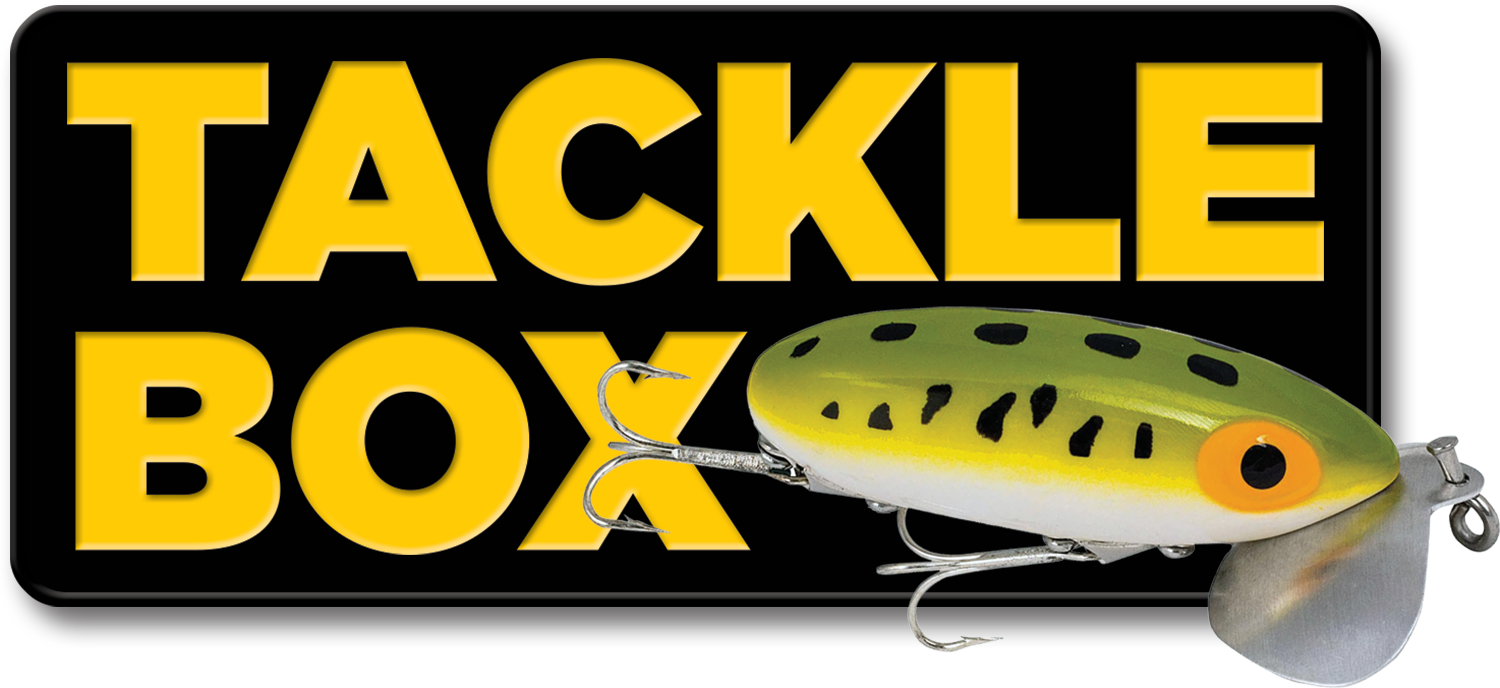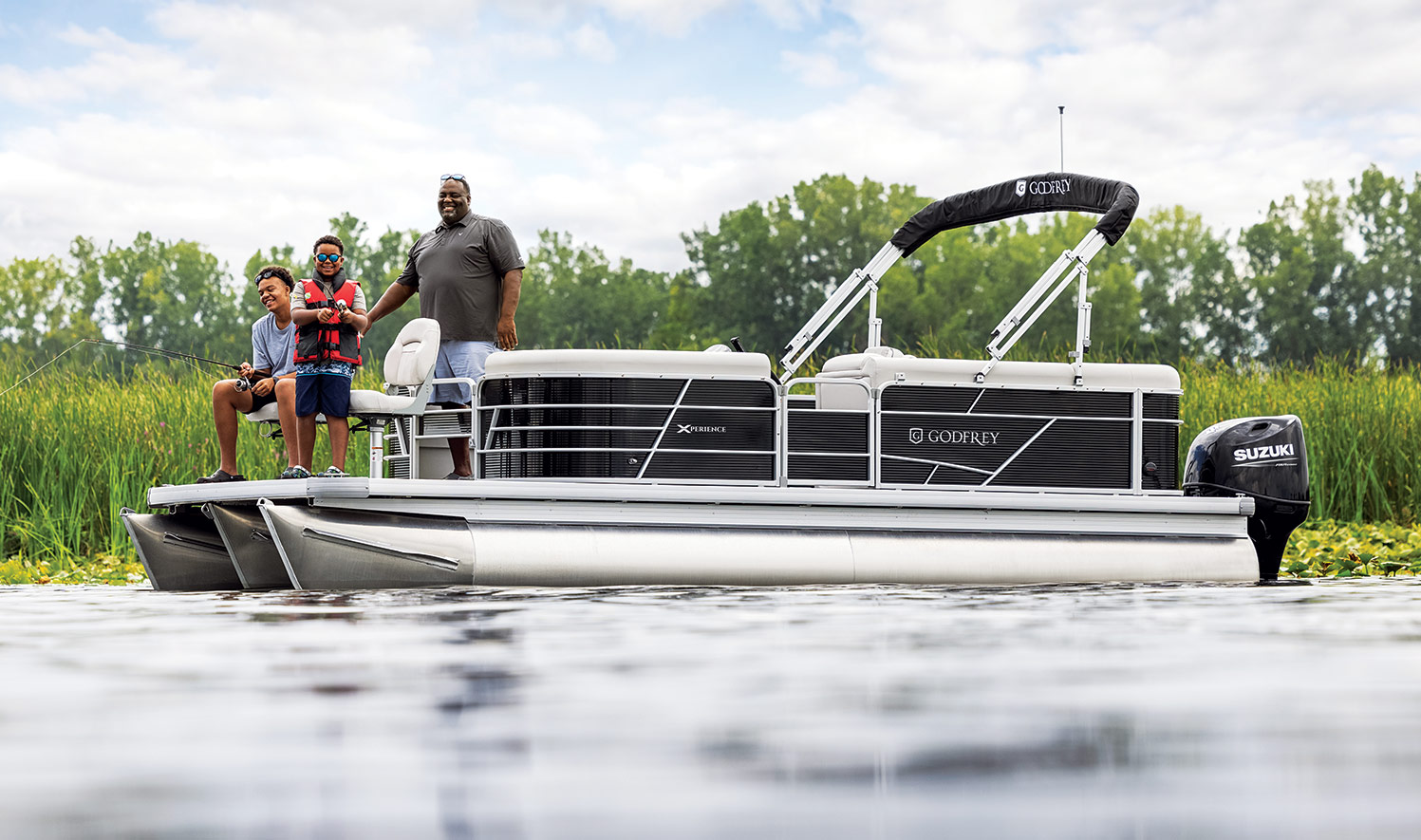
For example, crappies will be in post-spawn mode the farther south you find yourself fishing this month, while the ‘slabs’ in the northern states may just be getting to their beds. Either way – and for all in between – fish such as crappies will be feeding to put weight back on in the post-spawn, feeding to prepare for the spawn, or guarding nests that have been established and chasing any baitfish that approaches their turf.
The same pattern is true for most of our freshwater gamefish, which move shallow each spring to spawn, putting the hungry fish in range of anglers not only fishing from boats, but from shore as well. When targeting spawning crappies in May I used to beach our pontoon boat in likely spots to allow me to walk and wade into range of fish that were stacked up way back in the flooded brush. Using a long rod and only about three feet of line off the tip top, I could reach small openings in the cover and drop a jib or minnow or a combo of both vertically into the water and know within seconds if there were any active fish in the pothole. I’d give it a 30 count and if I didn’t get hit, I’d move on to the next potential honey hole. I would recommend the tactic this month to anyone who wants to catch a crappie: fish brushy shorelines and shallows using a small live minnow on a #8 light wire hook suspended 2-4 feet under a small bobber.

Using the same just-off-the-brush tactic, don’t be surprised if you hook into something much larger than the bass your anticipated. That’s especially true if instead of a live minnow you tempt the fish with chicken liver, rotten shrimp, or prepared catfish bait. Channel catfish flood the shallows this time of year to feed on the crappie spawn and can be found hanging out between the edge of the brush and the first drop-off near same.
Walleyes can be jigged up like no other this time of year, especially if you find gravel where they may be spawning or sunken weed beds where the walleye hide and feed, often in surprisingly shallow water. To find actively feeding walleyes this time of year – or any time, actually – find gravel or rocky shorelines that are exposed to the wind and if you can, locate a color change, where the roiled, silt-laden water meets the clear stuff. In the absence of a color change, just cast baits toward the shore and work through and below the waves, where the walleye cruise and ambush baitfish that have been forced to the edge and concentrated in the underwater maelstrom. Live minnows under a bobber, jigs, jig-and-minnow combos, or stick baits that mimic the size and silhouette of the local preyfish will all produce walleye when they are engaged in such a feed. And May is prime time.
Doing most of my fishing in the Midwest, I don’t have much experience targeting trout from a boat. My best luck catching rainbow, lake and brook trout in lakes comes when drifting a live minnow on a light line in a light breeze to keep the boat moving slowly. I have found trout will suspend, school and feed in open water during the spring, and simply presenting a few minnows at different depths on flatlines or under bobbers until they are intercepted has provided me with good action despite the simplicity of the tactic.

If I want to catch a mess of bluegills and other sunfish this month, it’s easy: find a shallow bay, flat or shoreline with a sand, mud or gravel bottom and look for plate-sized depressions on the bottom in less than three feet of water. Those depressions are sunfish spawning nests, and nearby will be what is usually a male sunfish guarding the underwater homestead. Even if they aren’t hungry, the guard fish will attack any bait presented and push it out of the way. You can imagine how long a delicately presented worm or minnow or grub on a small hook will survive in that situation.
So get out there and wet a line from your deck or pontoon boat this month, if no other. It’s the best time of the season to give fishing a try or to challenge yourself by targeting a new species, when you just “may” find success.


- LENGTH:22′ 11″
- BEAM:8′ 6″
- DRY WEIGHT:2,080 LBS.
- WET WEIGHT:2,260 LBS.
- PASSENGER CAPACITY:12
- MAX POWER:150HP
- FUEL CAPACITY:30 GALS.
www.godfreypontoonboats.com
- LENGTH:22′ 11″
- BEAM:8′ 6″
- DRY WEIGHT:2,080 LBS.
- WET WEIGHT:2,260 LBS.
- PASSENGER CAPACITY:12
- MAX POWER:150HP
- FUEL CAPACITY:30 GALS.
www.godfreypontoonboats.com